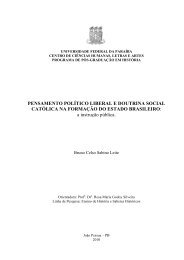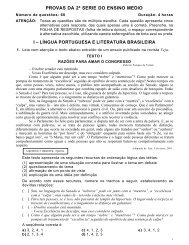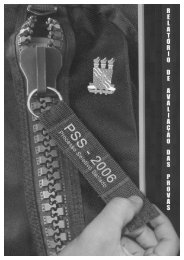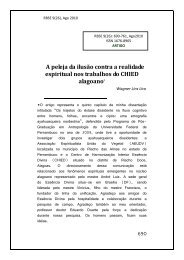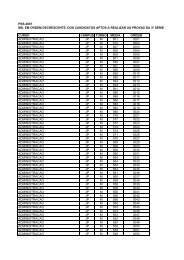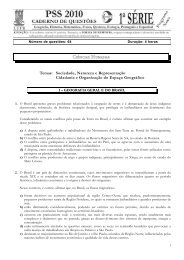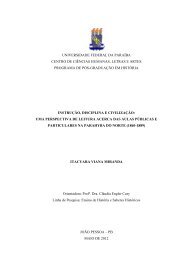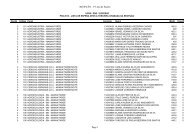abril de 2004 - CCHLA - Universidade Federal da ParaÃba
abril de 2004 - CCHLA - Universidade Federal da ParaÃba
abril de 2004 - CCHLA - Universidade Federal da ParaÃba
You also want an ePaper? Increase the reach of your titles
YUMPU automatically turns print PDFs into web optimized ePapers that Google loves.
Generated by Foxit PDF Creator © Foxit Softwarehttp://www.foxitsoftware.com For evaluation only.Greek, and compared these meanings with mo<strong>de</strong>rnWestern languages. Such studies may prove to beman<strong>da</strong>tory in the quest for clear conceptual <strong>de</strong>finitions ofemotion words.ConclusionIn a still wi<strong>de</strong>r frame, is there any general way ofintegrating the separate routines of theory, method, and<strong>da</strong>ta, disciplines and sub-disciplines, levels of analysis(micro and macro), the humanities, etc? Even if we useconceptual, rather than vernacular <strong>de</strong>finitions of in ourformulation of the problem, we still face an unsettlingobstacle. Vernacular words and "common sense" in anyculture, which are a drawback because they areambiguous, still have a great advantage over currenthuman science. Most problem solving by laypersons isrelatively unspecialized: it draws on conscious andunconscious i<strong>de</strong>as ("intuition") freely, and the person’stotal realm of knowledge, catch as catch can. Thespecialized knowledge of the various human sciences,which usually accounts for only a small part of anyparticular type of conduct, has found it hard to compete.In an earlier publication (Scheff 1997), I proposedpart/whole analysis as a move toward integration. Thephilosopher Spinoza was one of the first to note theextraordinary complexity of human conduct. He proposedthat in or<strong>de</strong>r to un<strong>de</strong>rstand even routine behavior, weneed to relate "the least parts to the greatest wholes." Ihave interpreted this to mean that we need integration inthe human sciences between the disciplines, the microand macro levels just as a first step, in or<strong>de</strong>r to link <strong>da</strong>taand theory. Un<strong>de</strong>rstanding research results in relation tosocial/cultural wholes is only one aspect of this largerframework.ReferencesBAUMEISTER, Roy, Laura Smart, and Joseph Bo<strong>de</strong>n. 1996. Relation ofThreatened Egoism to Violence and Aggression: The Dark Si<strong>de</strong> of HighSelf-Esteem. Psychological Review. 103: 5-33.BLAU, Peter, and O. D. Duncan. 1967. The American OccupationalStructure. New York: Wiley.BOLTZMAN, Ludwig. 1899. The Recent Development of Method inTheoretical Physics. Monist 11: 229-30.126



